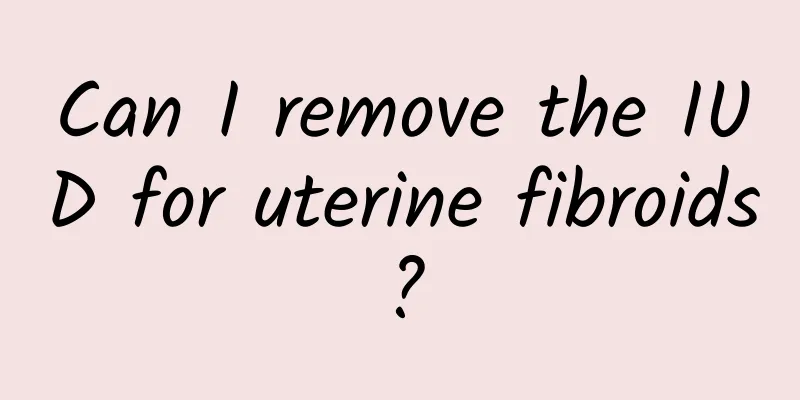Can't bend little finger

|
The inability to bend the little finger is one of the more obvious manifestations of tenosynovitis, and it is a very common disease among today's office white-collar workers. There are many types of tenosynovitis, such as radial styloid styloid stenosing tenosynovitis, flexor tendon stenosing tenosynovitis, myositis, and ulnar extensor carpi tenosynovitis. Different types have different symptoms. Below, we will introduce in detail the clinical manifestations and treatment methods of tenosynovitis. 1. Why can’t the little finger bend? This is tenosynovitis. Some tendons are surrounded by a sheath of fibrous tissue called the tendon sheath. Its function is to facilitate the sliding of the tendons and allow the fingers to flex and extend normally. If you have tenosynovitis, your fingers will not be able to extend and retract freely. 2. Clinical manifestations 1. Radial styloid stenosing tenosynovitis Also known as de Ouervains disease, it is characterized by pain on the radial side of the wrist that is closely related to thumb movement. This disease is more common in women over 40 years old, but it can also occur in breastfeeding women. 2. Stenosing tenosynovitis of the flexor tendon It often occurs on the thumb, middle and ring fingers, and the age of onset is generally over 40 years old. In the early stage of the disease, snapping and pain occur when the fingers are flexed and extended, so it is also called "trigger finger". Patients often report inflexible joint movement and swollen joints. In severe cases, the joint is locked in flexion or extension, and the joint cannot be straightened or flexed. This disease occasionally occurs in children, with the thumbs on both sides in a flexed position and unable to be actively straightened. In mild cases, the thumb can be straightened through local massage when the child is asleep. In severe cases, the thumb cannot be straightened even passively. 3. Myosinitis Also known as gravel myothelial myociitis. When wrist activity increases, redness, swelling, heat, and local tenderness appear on the proximal side of the back of the wrist, and pressure may produce crackling or snow-stepping sounds. 4. Ulnar extensor carpi tenosynovitis It is one of the causes of ulnar wrist pain. The extensor carpi ulnaris tendon and surrounding sheath affect the distal radioulnar joint and the triangular fibrocartilage complex of the wrist 3. Treatment Methods 1. Radial styloid stenosing tenosynovitis When it is first diagnosed or the symptoms are mild, conservative treatment such as immobilization, physical therapy or local blockade can be used. If non-surgical treatment does not significantly improve symptoms or symptoms recur, surgical treatment can be used. Surgical treatment does not end with cutting open the first sheath on the dorsum of the wrist. The sheath should also be checked for anatomical variations. If there are any, the excess part needs to be removed. If there is tendon adhesion here, it should be released at the same time. Since the superficial branch of the radial nerve and its branches pass subcutaneously here, they should be protected during surgery and not damaged. 2.Stenosing tenosynovitis of the finger flexor tendons (1) Physical therapy or local blockade can be used when the disease first occurs, and most of them are effective; (2) Surgery can be used for patients with severe or recurrent lesions. The thickened narrow ring should be removed during surgery. The extent of the removal should be determined by observing that the thickened part of the flexor tendon is not blocked by the sheath when the finger is flexed and extended. 3. Myosinitis Most symptoms can disappear by immobilizing the wrist, applying local hot compresses, and performing local physical therapy or local blockade when necessary. If the symptoms recur over a long period of time, the peritendinous and synovial tissues become thicker, and local bulges occur, surgical treatment may be considered to remove the thickened synovium and fascia. 4. Ulnar extensor carpi tenosynovitis In the early stage, immobilization or local closure is required, and in the late stage, synovectomy or partial sheath resection is performed. Similarly, similar symptoms may occur in the radial and ulnar flexor wrist muscles, often caused by corresponding tenosynovitis. If the disease recurs, patients may also consider surgical treatment. |
<<: My little toe hurts when I wear shoes
>>: Why is there a dent when pressing the calf?
Recommend
What are the benefits of soaking your feet in ginger?
The weather is relatively cold in winter, and som...
Runny nose down the throat
Normally, our runny nose flows outwards, but some...
What are the obvious symptoms of hernia in men?
Hernia is a disease that can occur in both adults...
Basilar artery occlusion?
Basilar artery occlusion is also known as BAO. It...
How much blood is drawn for liver function test
Before we go to a new school or enter a new unit,...
Chinese medicine treatment of eczema
Speaking of eczema, many friends know that newbor...
What are the small bumps under my lower lip?
Generally, small bumps under the lips are mostly ...
TCM Syndrome Differentiation of Stomach Qi Deficiency
Stomach Qi deficiency syndrome: refers to the weak...
Does toothpaste have anti-inflammatory effects?
Toothpaste is very common in our daily life. In a...
What are the reasons for small red spots on the body?
If you want to have a healthy body, you also need...
Can I have a child with second degree cervical erosion?
Second degree cervical erosion means that the cer...
Symptoms of chronic fetal hypoxia
Many pregnant mothers know that they should alway...
What to do if your eyes are inflamed and swollen? This treatment will help you recover quickly!
For us, eyes are very important organs, but also ...
What are the three symptoms of tinnitus?
Tinnitus is a perceptual disease that occurs in p...
Can diabetics eat barley and red bean porridge?
There are more and more diabetes patients, and th...









